RetroLisa
--- | 1960s Everyday Life
part 1 | |
|
___________________________________________________________________________________________________________
|
|
|
RetroLisa
__________________________________________
|
|
|
RetroLisa
| ___________________________________________________________________ | __ | _____________________________ | _______ | Education
The school curriculum began to reflect the changing times during this turbulent decade. Events in Vietnam prompted social science classes to expand their coverage to include Africa and Asia. Soviet advances in space exploration forced us to analyze our science and math programs. The result was the New Math....a radical new teaching strategy that many math departments began to adopt in the early 1960s. Even though parents (and most teachers) hated it, administrators hoped the New Math would help students compete in an increasingly technological society.
The New Math
Whatever Happened To The New Math?
grade school
did you know?...
In 1968, the first female teacher was allowed to teach while visibly pregnant.

why can't Johnny read?
Schools didn't teach phonetics in the 1950s, and many children were coming out of the school system unable to read properly. In the 1960s, phonics returned to the grade school curriculum.
books & equipment
Grade school students learned to read using the Dick & Jane and Ginn Basic readers. Lessons were enhanced with audio/visual resources like films, records, overhead projectors and filmstrips. Students who liked to work at their own pace could complete the color-coded reading lessons in the SRA Reading Laboratory Kit.
female health
When the boys went to study hall and the girls gathered in the gym, you knew it was time for The Movie. Schools first took on the task of educating pre-teen girls about the facts of life in the 1920s. Booklets and other materials were provided by feminine hygiene companies with the goal of promoting brand loyalty at a young age.
Dick & Jane Readers
Vintage School Readers
SRA Reading Labs
Growing Up & Liking It
Phonics
high school
dress codes
Dress codes were strictly enforced. Boys were sent home if they weren't wearing a belt or a shirt with a collar. They could also be sent home if their hair was too long. In the fashion world, hemlines were inching up, and girls had to perform the kneel test....their skirts had to be long enough to touch the floor when they were kneeling. And no slacks!
driver's ed
The first high school driver's education class was taught in the 1930s. By the 1960s, Driver's Ed was available to 70 percent of high school students. Many states made it mandatory for teens to take the class before applying for a license. The driver simulation machine was the latest high-tech teaching tool.
college bound
For the first time in history, it was assumed that most high school students would be going on to college. Many schools began to give more difficult assignments as a way to prepare students for college coursework.
clubs
There were plenty of clubs to join in the typical high school of the 1960s. Many of them were designed to prepare students for future careers, such as the Future Farmers Of America, Future Nurses Of America and Future Homemakers Of America. There were also glee clubs, sororities, pep clubs and the Girls Athletic Association.
scholastic competitions
Each year, many high schools sent a team of students to compete in contests like It's Academic. Girls who belonged to a home economics club often competed in baking contests.
gender divisions
Gender dictated which classes you took and which activities you participated in. Girls took Home Economics, boys took Industrial Arts. Boys were on the football team, girls were cheerleaders.
college
A great deal of debate, protest and change took place on college campuses in the 1960s. A survey taken in 1968 revealed that 81 percent of undergraduates were dissatisfied with their schools. These students took an active role in seeing that some changes were made. Protesting and striking students demanded more relevant coursework, more ethnic studies, more control over their classes and more diversity in the student population.
Student life was governed by the policy of in loco parentis, which allowed colleges to act in place of the parents when supervising student activities. Off campus, these young people were considered adults, but at school they were subjected to curfews, dorm visitation restrictions, close supervision and rules against having a car or renting an apartment. This unpopular policy was also a target of protest in the late 1960s.
The counterculture movement flourished on college campuses in the late 1960s. This resulted in freak-outs, anti-war rallies and increased drug use. It also caused a decrease in traditional college activities such as pledging fraternities.
At the time, school officials looked upon these incidents as nothing more than temper tantrums. However, most of the things these students worked for eventually became reality.
College Freak-Ins & Freak-Outs
The Day "In Loco Parentis" Died

Visit my In The News page to read
about social activism on college campuses!
| |

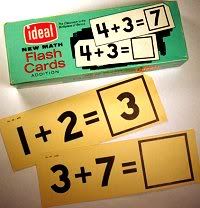
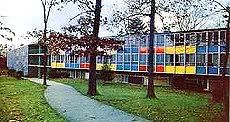
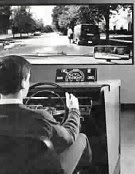
Driver simulation machine
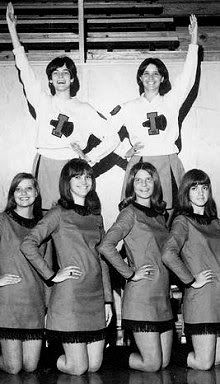

|
_________________________________________________
|
|
|
RetroLisa
| ___________________________________________________________________ | __ | _____________________________ | _______ | Health
polio vaccine
Polio was one of the most frightening diseases of the 20th century. It struck without regard to race or income, and left ruined lives and ruined families in its wake.
Jonas Salk began his polio vaccine research in 1947. He isolated three types of polio and developed an injectable vaccine using a dead form of the virus. The Salk vaccine was officially announced in 1955. The number of polio cases began to drop dramatically, and the public hailed it as a miracle.
In 1957, Dr. Albert Sabin launched clinical trials of an oral vaccine using a weakened form of the live virus. His Type I, Type II and Type III oral vaccines were licensed in 1961 and 1962. They were combined into a single vaccine in 1963. The Sabin vaccine was cheaper to produce and consisted of just a few drops of liquid on a sugar cube. It quickly became the preferred vaccine for pediatricians and health officials.
Citizens were urged to visit their local school or city hall to participate in a mass innoculation program. Between 1962 and 1965, an estimated 56 percent of the American population received the Sabin oral vaccine.
tuberculosis
While the Salk and Sabin vaccines were bringing polio under control, tuberculosis was still a threat in the 1960s. Local newspapers urged you to visit the mobile chest X-ray unit when it came to your town, and the purchase of Christmas Seals provided funds for TB research.
Polio Vaccine
Christmas Seals
King County Mobile Chest X-Ray
| |
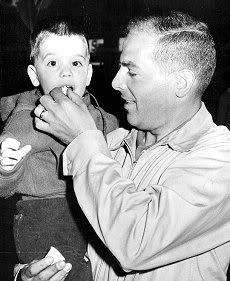
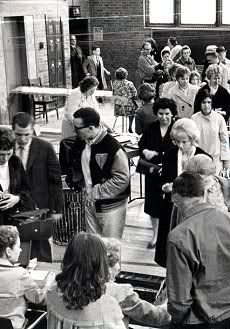
Mass polio innoculation program, 1964
|
_________________________________________________
|
|
|
RetroLisa
| ________________________________________________________________ | __ | ________________________________ | _______ | Smoking
During the first half of the 20th century, smoking rates increased at a steady pace. They reached their peak in the 1950s and early 1960s, when approximately 45 percent of the American adult population were smokers.
health concerns
As the 1960s dawned, things were beginning to change. During the 1950s, the general public became aware of the health hazards of cigarette smoking. Beginning in 1950, private medical journals published studies linking smoking to lung cancer. Magazines like the Readers Digest banned cigarette advertising and ran anti-smoking articles. The first wrongful death lawsuit against a tobacco company was filed in 1954.
The turning point came in 1964, when the Surgeon General released a report that linked smoking to lung cancer, heart disease, chronic bronchitis and emphysema. Further research linked smoking by pregnant women to premature births and low birth weight. These results made a tremendous impact on both the public and the government.
 ---- ----
kick the habit
The modern anti-smoking movement was born in the late 1960s. Organizations like the American Lung Association, American Heart Association and American Cancer Society all joined in the fight. Media campaigns were launched, complete with posters, buttons and anti-smoking publications.
new regulations
In 1966, legislation went into effect that required cigarette packages to carry this health warning:
----------Caution: Cigarette Smoking
----------May Be Hazardous
----------to Your Health.
In 1967, the Fairness Doctrine required that all TV and radio stations air anti-smoking public service announcements on a regular basis. Two years later, Congress proposed a total ban on cigarette commercials. This law would go into effect in 1971.
In 1969, anti-smoking advocates pushed for a smoking ban on all commercial airlines. Later that year, Pan-American Airlines was the first airline to create non-smoking sections on their jumbo jets.

Visit my Advertising page to learn
about anti-smoking PSAs!
reaction
The anti-smoking PSAs were very effective in the war against smoking, and smoking rates began to decline for the first time in 100 years. It's estimated that ten million Americans quit smoking between 1967 and 1970.
In the wake of this anti-smoking evidence, tobacco companies tried several new tactics to keep people smoking. Cigarettes with filters were heavily promoted, and some advertisements actually urged customers to smoke without inhaling! New brands with slim, feminine designs were marketed especially for women. In an effort to improve their public images, several companies removed the word "tobacco" from their names.
| |
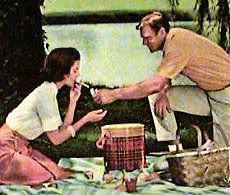
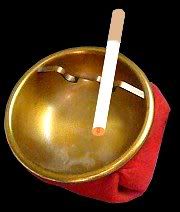
-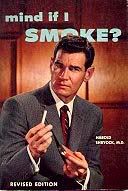
-Anti-smoking publication
-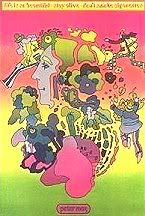
------Peter Max--
----Life is beautiful
------Stay alive
Don't smoke cigarettes
|
_________________________________________________
|
|
|
